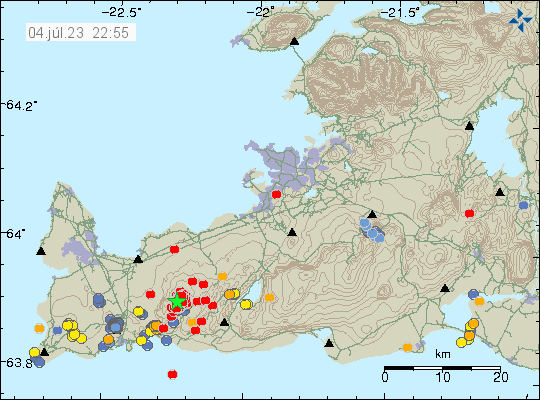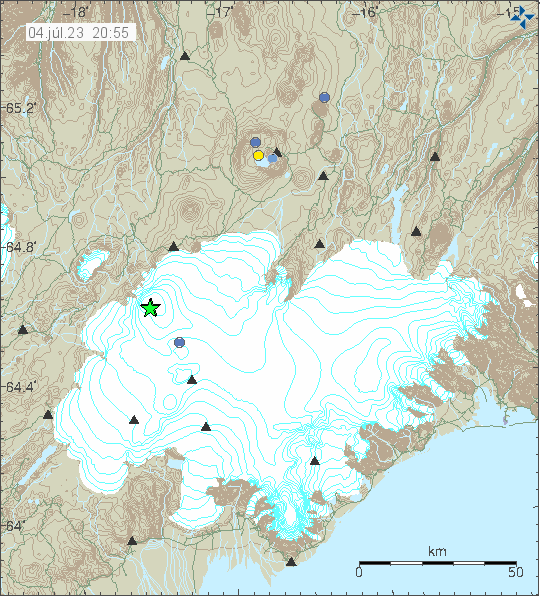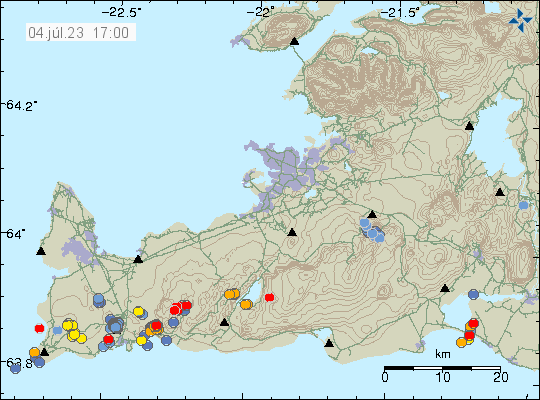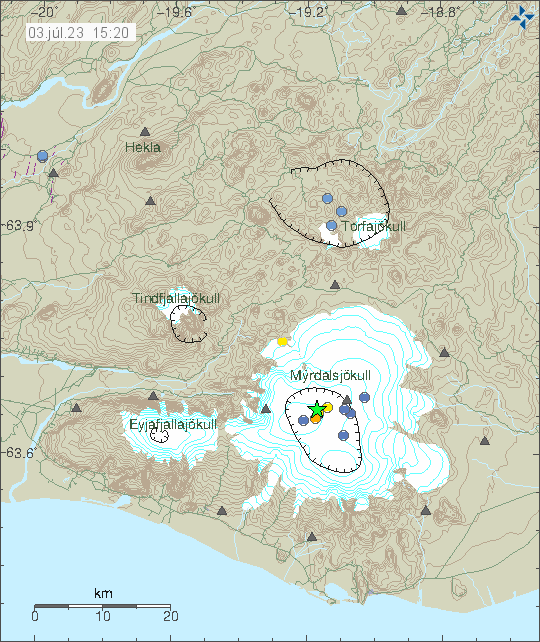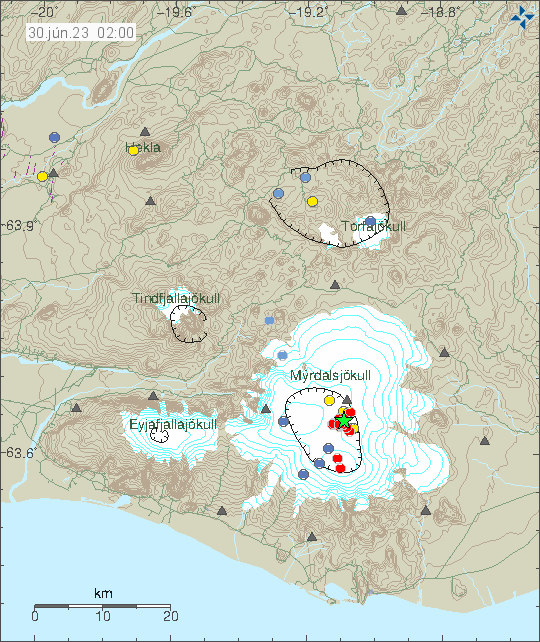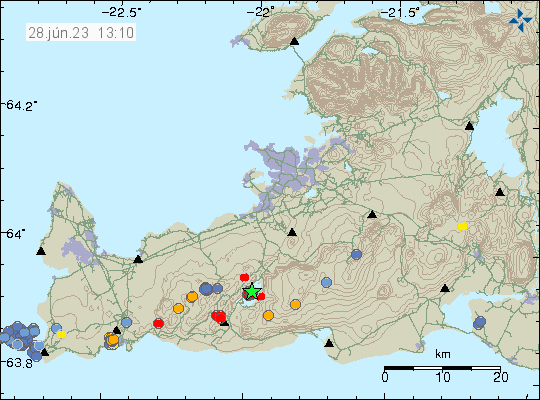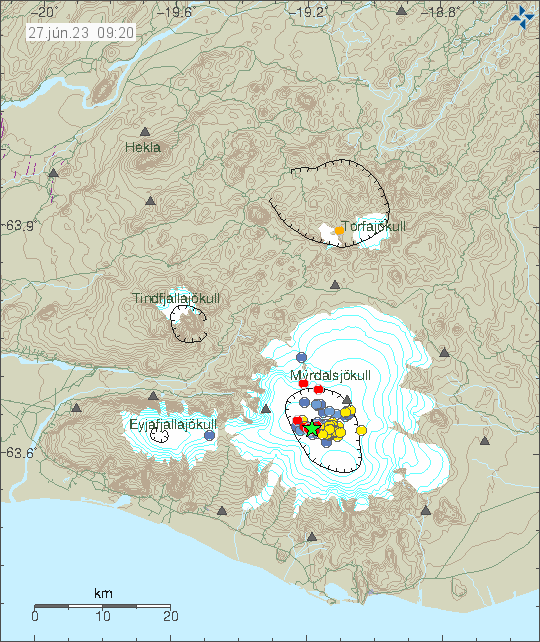This is a short update since this situation is changing quickly.
- Largest earthquake recorded so far had a magnitude of Mw4,8 and was felt over a wide area.
- Uncertainty level has been declared for Fagradalsfjall mountain area because of this earthquake activity and the risk of an eruption.
- Current depth of the magma is now 3 to 6 km and is getting shallower by each hour.
- Over 2000 earthquakes have been recorded at the writing of this article.
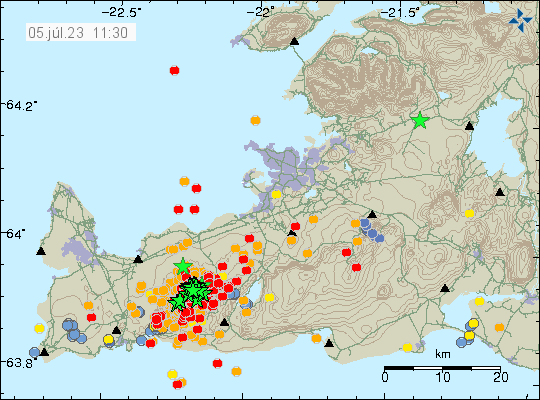
The only web camera that I know of at the moment and is showing Fagradalsfjall mountain is this one here. When the eruption starts, it should be visible in some part on this web camera. I hope that other closer web cameras are going online soon. Those where run by Rúv and mbl.is in last eruption.

